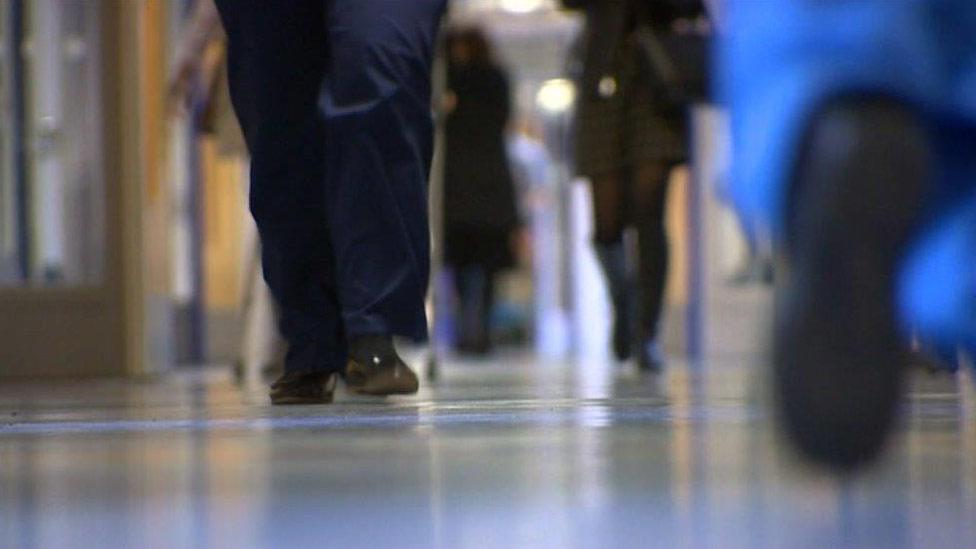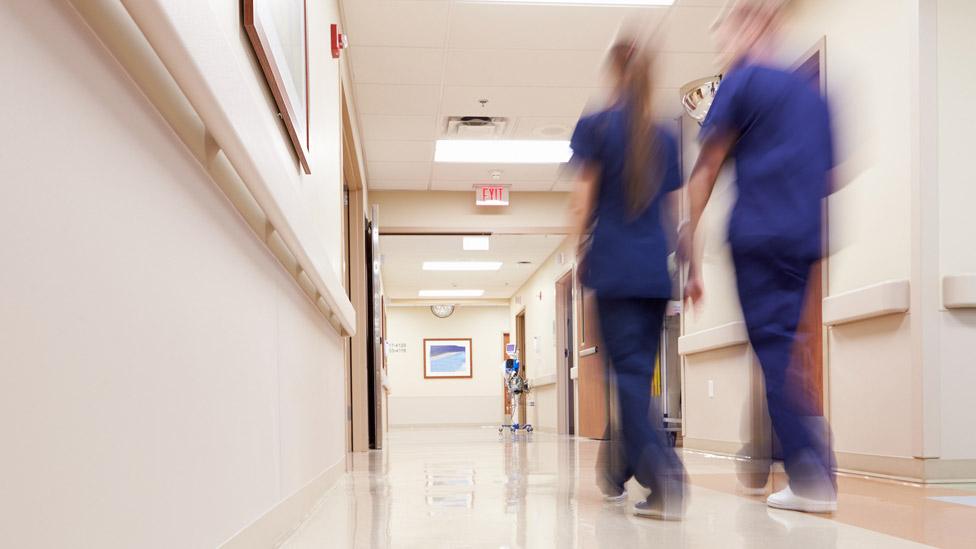Analysis: A&E figures take temperature of NHS Wales
- Published

Statistics showing the length of time patients have to spend in accident and emergency have been described as taking the temperature of the entire NHS system.
If emergency departments are struggling then it is a good bet the entire system is under strain.
That is because the A&E stats reflect not only the demand on the system - how many patients are turning up, but also can indicate how quickly patients are moving through the hospital system.
So if there are very few beds available on the wards it creates a log-jam in A&E and patients have to wait on trolleys for space to become available.
A knock-on effect can be seen in ambulances queuing outside.
Problems are made worse if there are delays in releasing patients from hospital because a care package is not in place for them to go home to.
That is why many argue making sure social services are properly resourced is a key element in trying to tackle the pressures facing the NHS.
And then there is the impact on planned operations. If intensive care units, for example, are full then there are no available beds there for patients who need them to recover from serious scheduled operations.
If that is the case - some elective surgery will inevitably get postponed.
Late last year, the Welsh Government pledged an extra £45m to health boards to try make sure scheduled, elective surgery and treatments are more protected this winter.
NHS Wales chief executive Dr Andrew Goodall said it was still too early to tell in terms of numbers but hospitals needed to ensure elective surgery was managed in a "sensible manner" as there was a duty to patients.
Another interesting thing to note - sometimes the figures show that unscheduled care units actually see a greater number of patients during the summer months - due to trips, slips, falls, bumps and so on.
But in winter the NHS often has to deal with more severely-ill patients, for example elderly patients who have breathing problems.
These need much more care, spend more time in the system and need more support to get better.

COMPARING WALES WITH ENGLAND
Historically A&E waits have been longer in Wales than in England. Some experts argue that is because there is a bigger mismatch in Wales between the number of beds available and the demand for them.
The difference might also reflect demographic factors - for example the Welsh population as a whole being older sicker and less well-off than other parts of the UK.
It is not straightforward comparing Wales with the NHS in England, because the "clock" starts differently when patients arrive.
For those in Wales, the waiting time starts being recorded as soon as the patient is registered inside the A&E department - or when the ambulance crew notifies the desk they have arrived outside.
In England, the arrival time starts when the patient is handed over or 15 minutes after the ambulance arrives at A&E, whichever is earlier.
Leaked data for NHS England seen by BBC News shows the figure reached a low of 75.8% on 3 January but had recovered to 82.4% last week.

HOW DO DIFFERENT HOSPITALS COMPARE?

ARE THINGS GETTING MORE DIFFICULT?
Looking back at A&E waiting times statistics in Wales over recent years - what is clear is that in each successive year things appear to be getting ever more difficult - despite the Welsh Government ploughing more money each year to help health boards deliver they're winter plans.
What is not in doubt though is staff on the front line are trying hard to make sure patients get treated safely - even when the pressure is really on.
The problem is the pressures year on year show little sign of easing.
- Published18 January 2017

- Published6 January 2017

- Published17 November 2016

- Published3 November 2016

- Published7 July 2016

- Published18 May 2016
